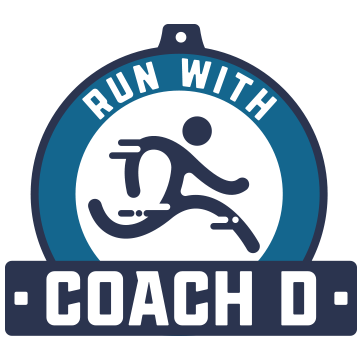Strength Training for Runners Vol 4
Three Essential Strength Exercises for Runners
Strength training is a game-changer for runners. Not only does it help prevent injuries, but it also improves running efficiency, power, and endurance. If you’re not incorporating strength work into your routine, you’re missing out on some serious performance gains! “Ultimately, your muscles are responsible for how fast you go in a race “ - Joel Friel, While it is important to train our cardio system (heart, lungs and blood) our muscles are the boss. Getting specific with your strength training can be the key to your next PR.
Here are three key exercises every runner should be doing, along with progressions and regressions to meet you where you’re at.
1. Single-Leg Squat
Why It’s Important for Runners
Running is a series of single-leg movements, so it makes sense to train strength and stability one leg at a time. Single-leg squats improve balance, strengthen the glutes and quads, and help prevent knee pain.
Regression: Assisted Single-Leg Squat
Hold onto a TRX strap, resistance band, or sturdy surface for support.
Lower yourself down with control, keeping your knee in line with your toes.
Work on stability before progressing to an unassisted version.
Progression: Pistol Squat
Lower all the way to a full squat while keeping your opposite leg extended forward.
Engage your core to help with balance and control the descent and ascent.
2. Deadlift
Why It’s Important for Runners
Deadlifts strengthen the posterior chain (glutes, hamstrings, and lower back), which is crucial for proper running mechanics and power generation. They also help with posture and prevent common running injuries like hamstring strains.
Regression: Romanian Deadlift with Dumbbells
Use lighter dumbbells and focus on a hip hinge rather than going all the way to the floor.
Keep a slight bend in your knees and maintain a neutral spine.
Progression: Single-Leg Deadlift
Perform the deadlift on one leg while keeping your back flat and core engaged.
This challenges balance and activates stabilizing muscles even more.
Changing the position of the dumbbells (same side of leg you are standing on) or even using a barbell vs dumbbells can advance the movements and make it more challenging.
3. Step-Up
Why It’s Important for Runners
Step-ups mimic the push-off phase of running, making them a great way to build power and single-leg strength. They also improve coordination and hip stability. Working up to using a box that hits at the knee is a great first goal, then increase weight and/or box height as you build stability/strength.
Regression: Low Step-Up
Use a lower box or step to reduce the range of motion.
Focus on driving through the heel and engaging the glutes.
Progression: Weighted Step-Up with Knee Drive
Hold dumbbells for added resistance.
Drive your knee up at the top to mimic running mechanics and improve power.
How to Incorporate These Exercises Into Your Training
Perform 2–3 sets of 8–12 reps for each exercise, 2–3 times per week.
Focus on proper form before adding weight or progressing to more advanced variations.
Strength work doesn’t have to be time-consuming—just 15–20 minutes a couple of times per week can make a big difference in your running performance.
Strength training isn’t just for elite runners—it’s for everyone! Prioritizing these key exercises will help you run stronger, stay injury-free, and feel more confident in your training.
